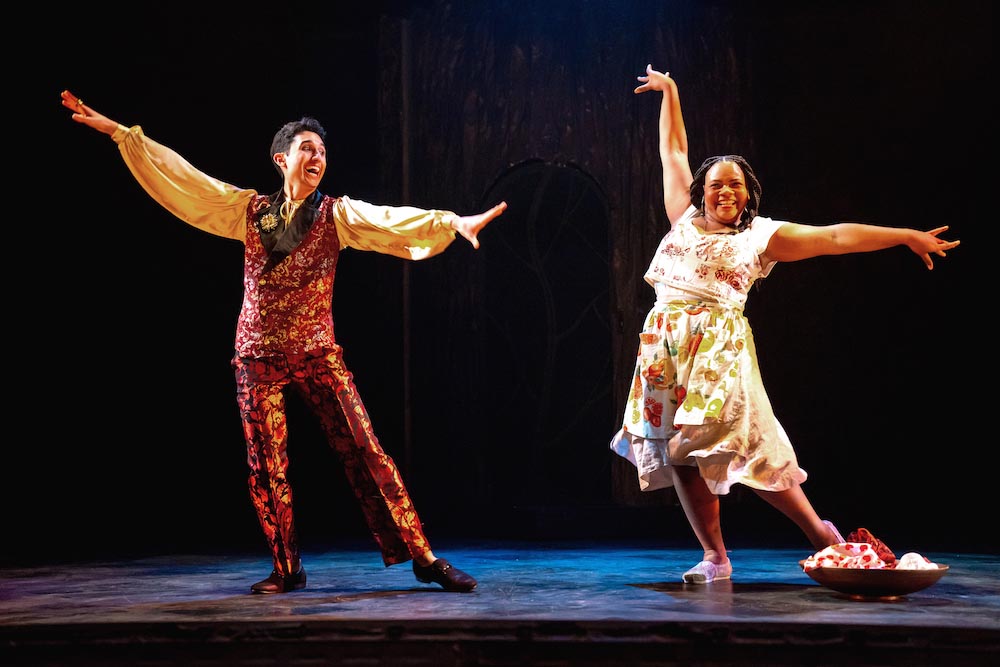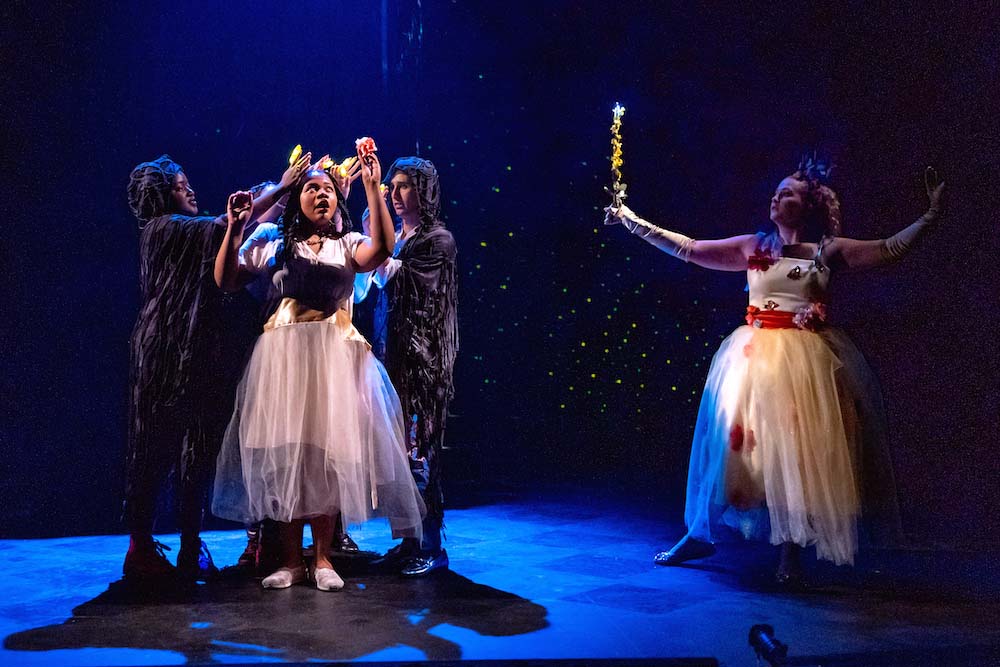Synetic Theater does fantasy better than almost anybody in the DC region, and its current production of Cinderella is a prime example. Of course, any child who goes to see Cinderella at Synetic Theater will love it. But so will any adult who is willing to allow themselves free rein just to be present.
In Washington, DC, the very center of our nation’s language of bureaucracy — a language that supports and can sometimes hide our governmental system’s functioning and motivations — Synetic introduced theatergoers and practitioners to the power of physical theater: a kind of theater that eschewed using words, and relied on movement and music to tell a story. This way of telling stories — which involves using the actor’s body to pointedly concretize the metaphors in the stories that are told — can bypass our well-developed defenses and propel audiences directly into their emotions, to their surprise and delight, sometimes leading to reflection.

Cinderella is adapted and directed by Maria Simpkins and it features Simpkins in the title role. In her program notes she states:
Cinderella is iconic. It is so quintessential that it appears in cultures around the globe. We all know the story: a mistreated young woman is seen for the wonder that she is and, with a little help, escapes an abusive home into a happily ever after. It has hundreds of names and has been adapted countless times, but at its core, it’s a story we know.
In the face of her mistreatment and abuse, Simpkins’s Cinderella finds her joy and comfort in her Afro-Latin culture: in its rhythms and in its embrace of her full-figured body. Throughout this production Afro-Latin music is contrasted to European waltzes: the waltz clearly being the enjoyable-enough officially sanctioned music of the dominant culture. The Afro-Latin music, on the other hand, is the music that connects Cinderella to the memory of her deceased mother and to the comfort and ecstasy of her own body. When we see Cinderella dancing with the Prince to this music — during their first accidental meeting in the forest and again during the formal ball the court sponsors in order for the Prince to find a wife — who can doubt that the two will end up together?
The production is successful at enlisting and harnessing the audience’s own imagination in service of producing fantasy. For example, at one point the actors appear with lightbulbs on their black-gloved hands. We see and know that they are just lightbulbs. But in combination with the incisive and supportive choreography, we willingly and happily embrace the possibility of those floating, fluttering lights to really be fireflies surrounding our heroine and transforming her adequate but humble dress into a magnificent evening gown that effectively embraces and celebrates her body.
And similarly with the mirrors. I loved the use of mirrors (elaborately stylized frames only, with no glass in them). Through these frames we watched the characters watching and evaluating themselves while looking directly at us. This allowed us to be in the characters’ bodies for a moment. In the ballroom sequence, handheld mirrors did double duty showing the characters’ self-centered opportunism on the one hand. And at the same time, this technique allowed the stage to appear to be peopled with twice the number of folks that were actually there, as each character danced with their mirrors as their partner.
The performances are uniformly engaging, beginning with Simpkins, who as Cinderella anchors the production with her vulnerability, enthusiasm, and unshakeable belief in her own worth, despite all the challenges and cruelty around her.

Robert Bowen Smith boldly gives us an effete patriarchal figure that reminded me of Cyril Ritchard’s Mr. Darling/Captain Hook in the 1954 Broadway production of Peter Pan.
The remainder of the cast (Pablo Guillen as the Prince and Irene Hamilton as his Valet, Covenant Babatunde as the Stepsister and Karina Hilleard as the Fairy Godmother) were all exemplary in the highly athletic work that Synetic requires of their actors. With these six actors, the stage was populated with crowds of characters in a very satisfying way.

Synetic’s technical staff is always excellent. And here they built a solid world for the characters to inhabit. Composer Konstantine Lortkipanidze surrounded the actors with music that was by turns appropriately dreamy or danceable.
Running Time: Approximately 1 hour.
Cinderella plays through December 26, 2021, at Synetic Theater in the underground Crystal City Shops, 1800 South Bell Street, Arlington, VA. Tickets are $10-$60 and are available online, at the theater box office (open an hour before showtime), or by phone at (703) 824-8060 ext. 117.
Click here to see Synetic’s COVID Safety Protocols.
Cast & Creative
Maria Simpkins – Cinderella
Pablo Guillen – Prince
Robert Bowen Smith* – Evil Stepfather
Covenant Babatunde – Stepsister
Karina Hilleard – Fairy Godmother
Irene Hamilton* – Valet
Joshua Cole Lucas* – Understudy
Amber Smithers – Understudy
Maria Simpkins – Director and Adaptor
Janine Baumgardner* – Choreographer
Justin Bell* – Creative Production Assistant to Creative Team
Konstantine Lortkipanidze* – Resident Composer
Emily Carbone – Props Designer
Ian Claar – Lighting Designer
Moyenda Kulemeka – Costume Designer
Jenn Nichols – Sound Designer
Aleksandr Shiriaev – Scenic Designer
Claire Fogle – Stage Manager
Briana Padgett – Assistant Stage Manager/Wardrobe
*Synetic Company Member.




